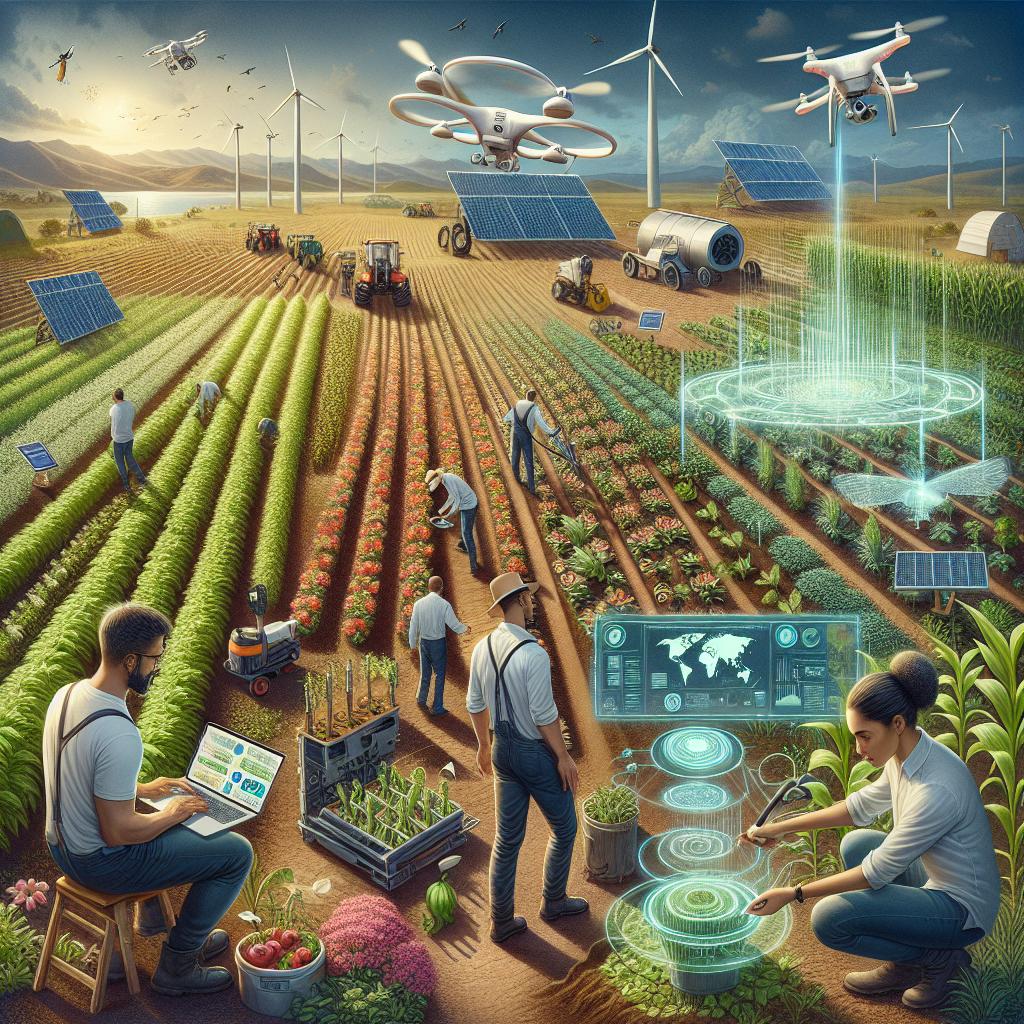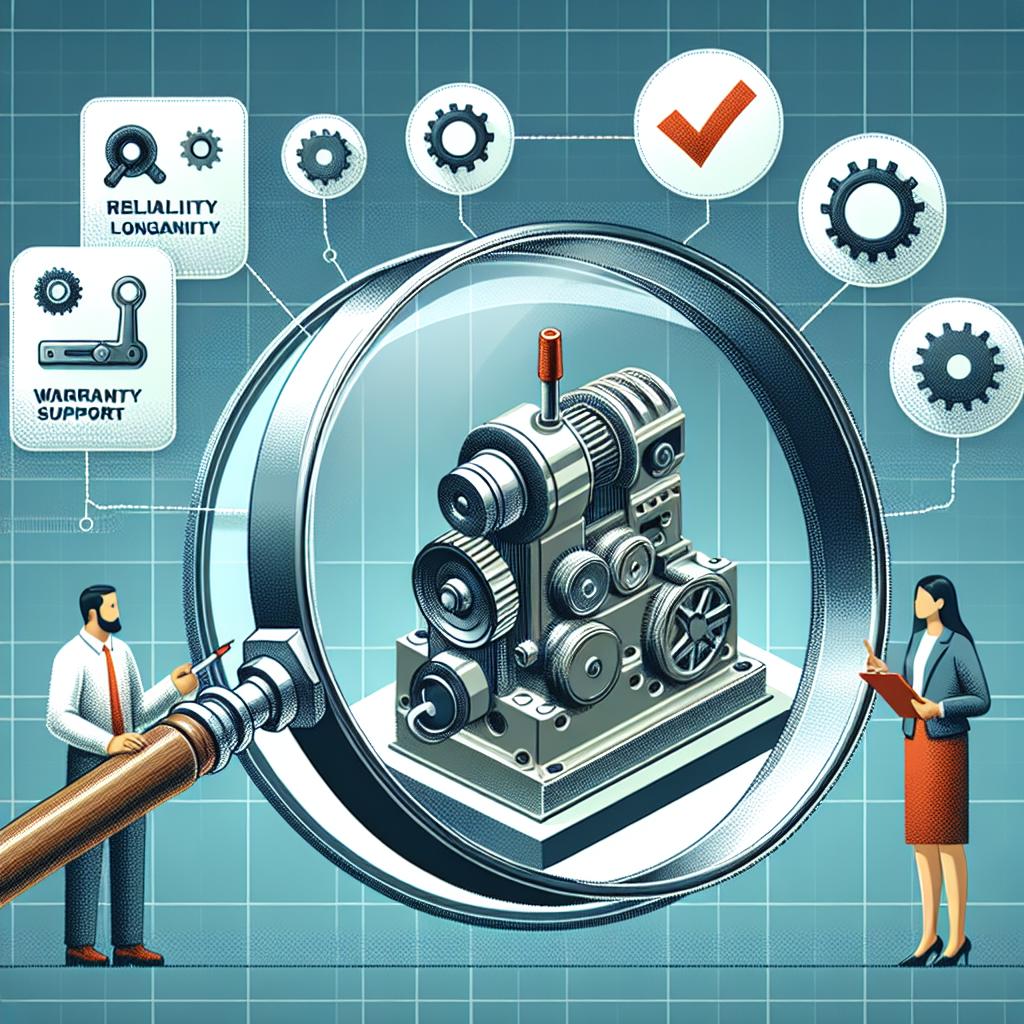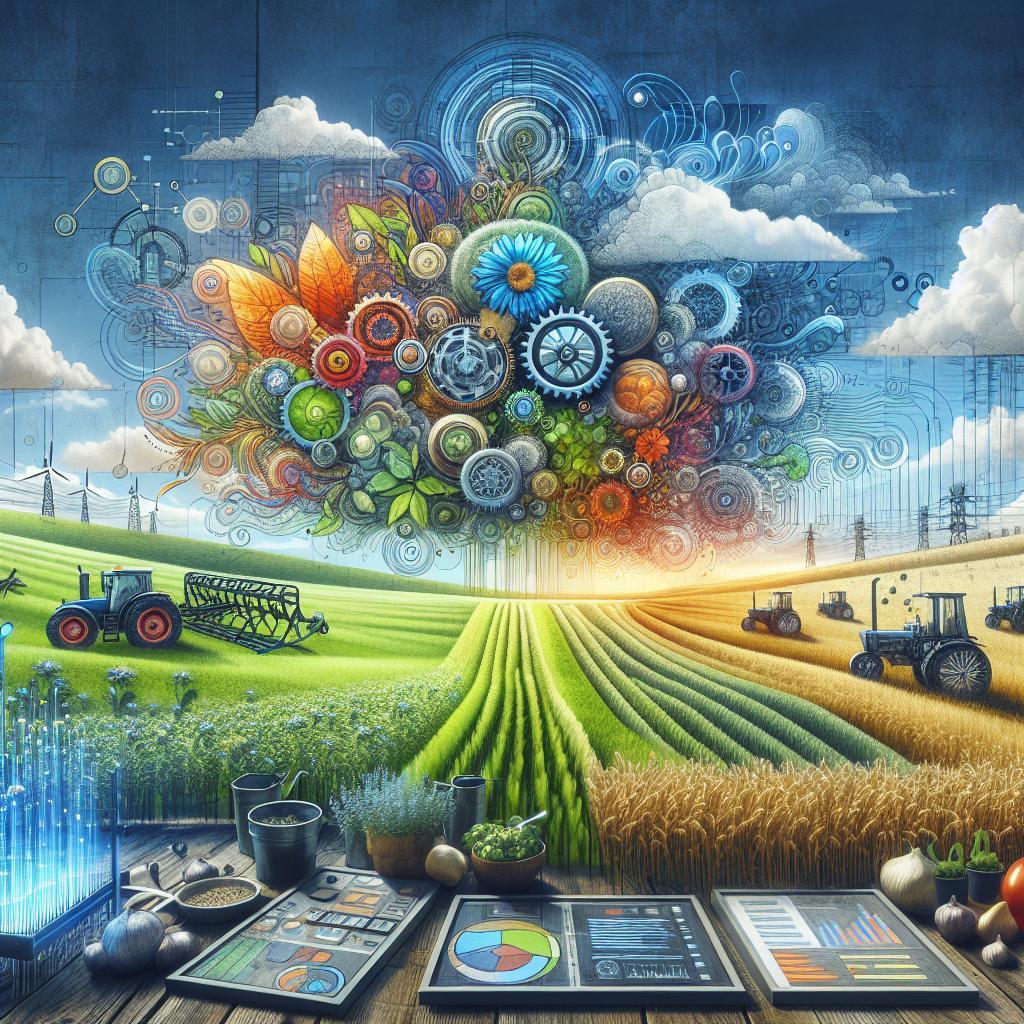This post may contain affiliate links which means I may receive a commission for purchases made through links. Learn more on my Private Policy page.
In an era where the demand for food is ever-increasing and the challenges of climate change loom large, the agricultural sector stands at a critical crossroads. Farmers and producers are tasked not only with feeding a growing global population but also with doing so sustainably and efficiently. Amidst this landscape, the importance of investing in high-quality agricultural equipment comes into sharp focus. Just as a painter relies on quality brushes to create a masterpiece, agricultural professionals depend on reliable and durable machinery to cultivate their land and harvest their crops effectively. High-quality equipment does more than just enhance productivity; it embodies innovation, resilience, and the potential for increased profitability. In this article, we will explore the myriad reasons why strategically investing in superior agricultural tools is crucial for the modern farmer looking to thrive in a competitive and ever-evolving industry.
Understanding the Impact of High-Quality Equipment on Farm Productivity
High-quality agricultural equipment significantly enhances farm productivity by streamlining processes and maximizing efficiency. When farmers invest in superior machinery, they benefit from a variety of advantages that contribute to overall output and sustainability. Some key benefits include:
- Increased Efficiency: High-quality equipment reduces the time and labor needed for tasks such as planting, cultivating, and harvesting, allowing farmers to operate more swiftly and effectively.
- Durability and Reliability: Better equipment is less likely to fail, meaning fewer disruptions in operations and lower maintenance costs over time.
- Precision Agriculture: Advanced technology in high-quality equipment enables accurate planting and crop management, leading to better yields and resource utilization.
Furthermore, investing in high-quality machinery can lead to improved crop quality and yield consistency. This is particularly important in competitive agricultural markets, where farmers must meet stringent standards and consumer expectations. To illustrate the difference in productivity, consider a comparison of equipment types:
| Equipment Type | Average Yield Increase | Maintenance Frequency |
|---|---|---|
| Basic Tractor | 5-10% | Monthly |
| High-Quality Tractor | 15-25% | Quarterly |
As demonstrated, the right investment can lead to a substantial increase in farm productivity and an overall healthier agricultural practice. The long-term benefits of maintaining superior equipment ultimately support both economic viability and environmental stewardship in farming operations.

Enhancing Sustainability with Advanced Agricultural Technology
In the modern agricultural landscape, the integration of cutting-edge technology is revolutionizing practices and making farming more sustainable. High-quality agricultural equipment not only improves productivity but also has significant implications for the environment. By utilizing precision farming tools, farmers can optimize resource use, reduce waste, and enhance crop yields. This advanced equipment includes:
- GPS-guided tractors that ensure precise planting and minimize overlaps
- Sensors that monitor soil health, moisture levels, and nutrient availability
- Drones for aerial imaging and crop scouting
Moreover, investing in durable machinery contributes to the longevity of resources and energy efficiency. The shift towards renewable energy sources, such as solar-powered systems and electric tractors, reduces reliance on fossil fuels and mitigates greenhouse gas emissions. By prioritizing sustainable practices through innovative equipment, farmers can achieve long-term viability in their operations while safeguarding the ecological health of their farms. Notably, these practices lead to:
| Benefit | Impact |
|---|---|
| Resource Efficiency | Minimized waste and cost savings |
| Biodiversity Enhancement | Improved ecosystem stability |
| Water Management | Optimal irrigation leading to water conservation |

Reducing Long-Term Costs Through Smart Investment Choices
Investing in high-quality agricultural equipment can yield substantial long-term savings, effectively offsetting upfront costs through improved efficiency and productivity. By choosing durable machinery that is built to withstand the rigors of daily agricultural tasks, farmers can minimize repair and maintenance expenses over time. Furthermore, advanced technology in high-quality equipment often translates to:
- Increased efficiency: Advanced machinery operates faster and with greater precision, reducing overall labor costs.
- Lower fuel consumption: High-quality equipment typically has better fuel efficiency, leading to significant cost savings.
- Enhanced longevity: Quality products tend to last longer, which means fewer replacements and lower cost of ownership.
Additionally, investing in premium equipment can provide farmers with a competitive edge in the marketplace. This can lead to higher yields and better quality produce, which can increase profit margins. For a clearer understanding, consider the following table that highlights potential cost savings over a standard equipment lifecycle:
| Equipment Type | Initial Cost | Annual Maintenance Cost | Estimated Lifespan (years) | Total Cost of Ownership |
|---|---|---|---|---|
| High-Quality Tractor | $50,000 | $1,000 | 15 | $65,000 |
| Standard Tractor | $30,000 | $3,000 | 10 | $60,000 |
In this comparison, the high-quality tractor shows a higher initial cost but substantially lower maintenance expenses and a longer lifespan. This investment choice illustrates how a focus on quality can lead to reduced overall expenditures, making it a wise decision for those looking to enhance their agricultural operations while managing financial resources effectively.

Navigating the Market: Key Features to Look for in Quality Equipment
When investing in agricultural equipment, it is essential to evaluate several critical aspects to ensure that you’re making a sound decision. Durability is at the forefront; look for materials that withstand the rigors of farm life, such as high-quality steel and robust components. Efficiency is another key feature; equipment that can handle tasks quickly and with minimal fuel consumption will save you money in the long run. Additionally, consider ease of maintenance — models that allow for straightforward servicing can prevent downtime and costly repairs, keeping your operations running smoothly.
Another important factor is technology integration. Modern agricultural tools that incorporate smart technology can offer increased precision and data tracking to optimize your crop management. Versatility also plays a crucial role; all-in-one machines that can perform various functions will be more cost-effective and save space on your farm. it’s worth investigating customer support and warranty options. Products backed by strong manufacturer support can provide peace of mind, ensuring you’re covered in case of issues. Below is a summarized comparison of these critical features:
| Feature | Importance |
|---|---|
| Durability | Withstands wear and tear |
| Efficiency | Reduces operational costs |
| Ease of Maintenance | Minimizes downtime |
| Technology Integration | Enhances productivity |
| Versatility | Increases cost-effectiveness |
| Customer Support | Provides peace of mind |
Q&A
Q&A: Why It’s Important to Invest in High-Quality Agricultural Equipment
Q1: What constitutes high-quality agricultural equipment?
A1: High-quality agricultural equipment refers to machinery and tools that are durable, efficient, and capable of delivering consistent performance under various conditions. This includes tractors, harvesters, seeders, and irrigation systems made with robust materials and cutting-edge technology that enhance productivity and reduce maintenance issues.
Q2: How does investing in top-notch agricultural equipment affect farming efficiency?
A2: Investing in high-quality equipment significantly boosts farming efficiency by reducing downtime related to repairs and replacements. Reliable machinery operates at optimal capacity, allowing farmers to complete tasks faster and more accurately. This efficiency not only saves time but also maximizes yield and profit margins.
Q3: What are the potential cost savings from using high-quality equipment?
A3: While the initial investment in high-quality equipment may be higher, the long-term cost savings can be substantial. Durable machinery tends to require fewer repairs, and minimizes the risk of crop losses due to equipment failure. Additionally, more efficient machinery often consumes less fuel and reduces labor costs, further improving the bottom line.
Q4: How does high-quality agricultural equipment impact sustainability?
A4: High-quality equipment can enhance sustainability by promoting efficient resource use and minimizing waste. Modern machinery is designed to optimize fuel consumption and reduce soil compaction, leading to healthier ecosystems. Consequently, investing in higher quality equipment aligns with environmentally-friendly practices, which are increasingly important in today’s agricultural landscape.
Q5: In what ways can advanced technology in agricultural equipment improve farming practices?
A5: Advanced technology equipped in high-quality agricultural equipment, such as GPS guidance systems, precision planting technology, and data analytics, allows for smarter farming. Farmers can make informed decisions based on real-time data, leading to improved crop management and higher yields. This technological integration also facilitates better soil conservation and pest management strategies.
Q6: How does the longevity of high-quality equipment benefit farmers?
A6: High-quality equipment is generally built to withstand the rigors of agricultural work, leading to a longer lifespan compared to cheaper alternatives. This longevity ensures that farmers can rely on their investments for many seasons, reducing the frequency of equipment turnover and associated costs, thereby providing peace of mind and financial stability.
Q7: What role does high-quality equipment play in a farmer’s competitiveness?
A7: In an increasingly competitive agricultural market, the capacity to produce high-quality products efficiently is essential. High-quality equipment enhances productivity, improves crop quality, and allows for quicker turnaround times. As a result, farmers who invest in superior machinery can position themselves favorably against competitors, meeting market demands effectively.
Q8: How should farmers approach the decision to invest in high-quality agricultural equipment?
A8: Farmers should assess their specific needs, operational scale, and long-term goals when considering an investment in agricultural equipment. It’s important to conduct thorough research, weigh the benefits against costs, and consider the potential return on investment. Engaging with trusted suppliers and utilizing demos to evaluate performance can also aid in making an informed decision.
Q9: What are some common misconceptions about investing in high-quality equipment?
A9: A common misconception is that high-quality equipment is always out of reach financially. While it tends to require a larger upfront investment, many financing options, warranties, and resale values can make it more accessible. Another misconception is that all equipment is created equal; investing in quality can lead to substantial long-term benefits, affirming that ‘you get what you pay for’ holds true in agriculture.
By addressing these questions, we hope to shed light on the significance of investing in high-quality agricultural equipment and inspire farmers to consider how such investments can transform their operations.
Closing Remarks
investing in high-quality agricultural equipment is not merely a financial decision; it is a strategic commitment to the future of farming and food production. By choosing durable, reliable tools, farmers can enhance productivity, reduce downtime, and ultimately cultivate a more sustainable environment. High-quality equipment acts as the backbone of efficient agricultural practices, empowering farmers to meet the growing demands of the market while safeguarding their resources. As we navigate the complexities of modern agriculture, prioritizing quality in our tools will not only drive individual success but will also contribute to the broader goal of food security and sustainability. Let us plant the seeds of good choices today to reap a bountiful harvest tomorrow.
This post may contain affiliate links which means I may receive a commission for purchases made through links. Learn more on my Private Policy page.

